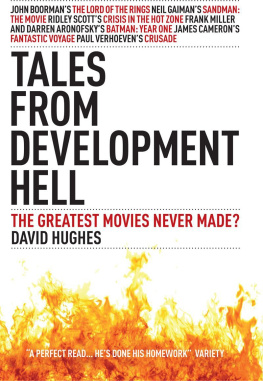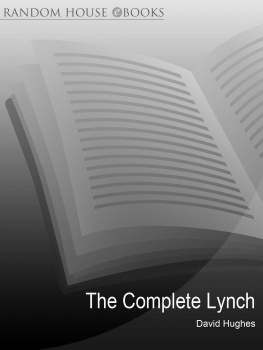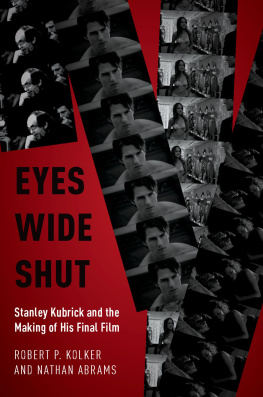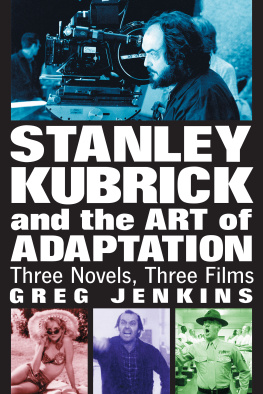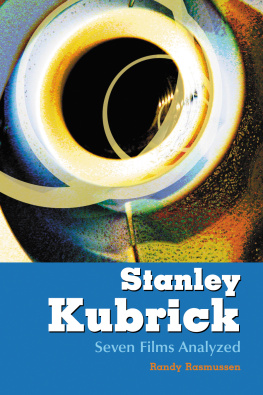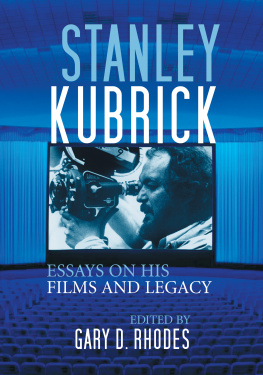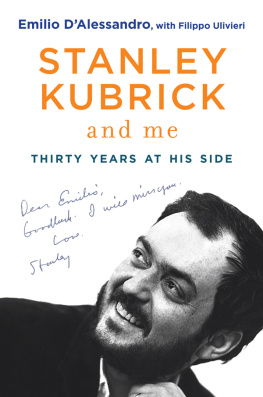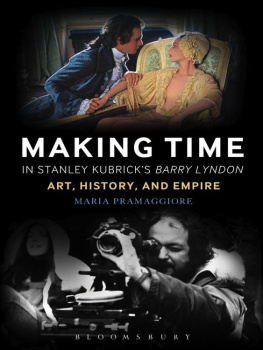Contents
About the Book
With just thirteen feature films in half a century, Stanley Kubrick established himself as one of the most accomplished directors in motion picture history. Kubrick created a landmark and a benchmark with every film; working in almost every genre imaginable, including film noir, war movie, SF, horror, period drama, historical epic, love story and satire yet transcended traditional genre boundaries with every shot. Examining every feature film, from the early shorts through to classics such as Paths of Glory, Dr Strangelove, 2001: A Space Odyssey, A Clockwork Orange, The Shining, Full Metal Jacket and finally, Eyes Wide Shut, The Complete Kubrick provides a unique insight into understanding the work of cinemas most enigmatic, iconoclastic and gifted auteur.
About the Author
David Hughes is a respected journalist, writer and documentary producer who has written for the Guardian, Face, Empire, Sky and Cinetantastique to name but a few. He is also creative director of the movie marketing company Picture Production Co.
Dedication
To Stanley K, Zahida K,
And my dear old P and M
Foreword
by Peter Bogdanovich
When Stanley Kubrick died in his sleep of a heart attack on 7 March 1999, even the New York tabloids reported the news with an auteur slant, headlining the directors generally bleak view of life. Words like secretive, reclusive, strange, mysterious and cold were repeatedly used to describe him.
Its true that the thirteen feature-length films he made over forty years present a disenchanted, sardonic and generally pessimistic view of humanity, but his lifelong friends, intimate associates and family members conjure a far more complicated picture of a man who could be deeply reserved but also outgoing, meticulous and laid back, loving and self-absorbed.
The precocious son of a Bronx doctor, Kubrick became a staff photographer for Look magazine at seventeen, but from the start he was captivated by the movies. He began as a kind of one-man band, financing, directing, producing, writing, shooting and editing three short documentaries Day of the Fight (1951), Flying Padre (1951) and The Seafarers (1952) and then doing virtually the same thing for his first two extremely low-budget features, Fear and Desire (1953), backed entirely by an uncle, and Killers Kiss (1955).
In 1954, having already run through two marriages, Kubrick moved to Los Angeles and formed a production company with his friend James B Harris, through which he made his first two professional pictures, the film noir The Killing (1956), with Sterling Hayden, and the powerful antiwar drama Paths of Glory (1957), starring Kirk Douglas. While shooting Paths of Glory Kubrick fell in love with and wed the German painter and actress Christiane Harlan, with whom he would rear two daughters, along with Christianes young daughter from an earlier marriage.
The Killing and Paths of Glory did not make money, but they did make Kubricks reputation as a budding genius among critics and studio executives. In 1960, Kirk Douglas hired Kubrick to replace another director on Spartacus, the only all-Hollywood production Kubrick would ever make, and his first box-office success. He hated the experience. Disenchanted with the industry and having developed a phobia about flying, the director soon afterwards moved with his family to England, never again to travel far from home.
Over the next 38 years, he made only eight more films. Between his controversial adaptation of Vladimir Nabokovs notorious Lolita (1962) and his grim but popular Vietnam War film, Full Metal Jacket (1987), Kubrick achieved a kind of mythic status in world cinema with three hugely successful pictures: his black comedy of the Cold War, Dr Strangelove or: How I Learned to Stop Worrying and Love the Bomb (1964), the mystical science-fiction saga 2001: A Space Odyssey (1968) and his ultraviolent investigation of violence, A Clockwork Orange (1971), based on Anthony Burgesss novel. (While Clockwork won the New York Film Critics Circle Award for best picture, it was wildly criticised in England for inspiring copycat crimes. Kubrick, wounded by the attacks, withdrew it from circulation in the UK.)
The gigantic and enduring box-office appeal and critical enshrinement of these three films, coupled with the slimness of his output and his distance physical and emotional from the Hollywood mainstream, fuelled a kind of legendary aura of integrity and perfectionism that gave Kubrick enormous power in the industry he avoided. Still, he was troubled by the fact that Barry Lyndon (1975), his costume drama adapted from Thackeray, though much admired in certain quarters, did not have a box-office response commensurate with its cost. His next work was his most openly commercial: The Shining (1980), based on a Stephen King horror novel and headlining a major star, Jack Nicholson.
When he died, at seventy, he had just completed Eyes Wide Shut, based on Arthur Schnitzlers Dreamstory, a project he had been thinking about for more than thirty years. The film, which deals candidly with sexual relations between a contemporary New York married couple, played by the husband-and-wife team of Tom Cruise and Nicole Kidman, opened in the United States on 16 July 1999.
I cannot say I knew Kubrick, though we spoke briefly on the phone two or three times in the early seventies. He was preparing to shoot Barry Lyndon and he called me out of the blue. His voice sounded extremely youthful, with a subdued but definite Bronx accent and a kind of reticence and self-effacement that was disarming. He asked what I thought about Ryan ONeal, whom I had directed in Whats Up, Doc?. Kubricks young daughters were fans of the movie and now were lobbying their father to cast ONeal in Barry Lyndon. Even in that brief exchange, Kubricks obsessions film and family were twinned.
They would remain that way until the end.
Peter Bogdanovich
Strange Love
or: How I Learned to Stop Worrying and Love Stanley Kubrick
Stanley Kubrick did not have much to say about his own films. He allowed them to speak for themselves, which they invariably did. Explaining his reticence to discuss his work, he once said that the Mona Lisa would have lost its mystique if da Vinci had written shes smiling because she has a secret lover underneath. Nevertheless, Kubrick also said that the very meaninglessness of life forces Man to create his own meanings, and that however vast the darkness, we must supply our own light.
Hence the existence of this book.
I count myself privileged that I saw more than half of Kubricks thirteen feature films namely Paths of Glory, Lolita, Spartacus, Dr Strangelove, A Clockwork Orange, Full Metal Jacket and Eyes Wide Shut for the first time on the big screen. The Complete Kubrick, however, is aimed primarily at those who didnt. Those who may have seen The Shining or Full Metal Jacket on their first run releases, and almost certainly caught Eyes Wide Shut at the cinema, but have probably seen most of Kubricks oeuvre on television, on video, or DVD. Those who are more interested in the films than the man behind them. Those who may have detected a Dr Strangelove reference on The Simpsons before they ever saw Dr Strangelove. Those who, like millions of Britons, have never seen
Next page

